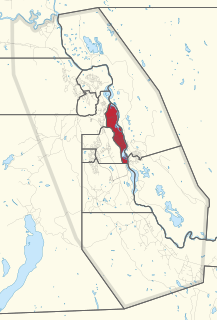The Office of the Chief Electoral Officer, commonly known as Elections Canada, is the non-partisan agency responsible for administering Canadian federal elections and referendums. Elections Canada is an office of the Parliament of Canada, and reports directly to Parliament rather than to the Government of Canada.
The Chief Electoral Officer of Canada is the person responsible for the administration of elections, referenda and other aspects of the electoral system in Canada. The position was established in 1920 under the Dominion Elections Act to be the chief executive of the independent agency now known as Elections Canada.

The Nova Scotia House of Assembly, or Legislative Assembly, is the deliberative assembly of the General Assembly of Nova Scotia of the province of Nova Scotia, Canada. The assembly is the oldest in Canada, having first sat in 1758, and in 1848 was the site of the first responsible government in the British Empire. Bills passed by the House of Assembly are given royal assent by the Lieutenant Governor of Nova Scotia in the name of the Queen.
Canada holds elections for legislatures or governments in several jurisdictions: for the federal (national) government, provincial and territorial governments, and municipal governments. Elections are also held for self-governing First Nations and for many other public and private organizations including corporations and trade unions. Municipal elections can also be held for both upper-tier and lower-tier governments. Formal elections have occurred in Canada since at least 1792, when both Upper Canada and Lower Canada had their first elections.

Labrador West is a provincial electoral district for the House of Assembly of Newfoundland and Labrador, Canada. From 1975 to 1996, the district was known as Menihek.
Dalhousie-Restigouche East was a provincial electoral district for the Legislative Assembly of New Brunswick, Canada.
Campbellton-Restigouche Centre was a provincial electoral district for the Legislative Assembly of New Brunswick, Canada.
Nepisiguit was a provincial electoral district for the Legislative Assembly of New Brunswick, Canada. It was known as Nepisiguit-Chaleur from 1974 to 1995.

Kent is a provincial electoral district for the Legislative Assembly of New Brunswick, Canada. It was created for the 1995 election, taking in most of Kent Centre and parts of Kent North. Its boundaries were expanded southward in 2006, while losing some territory to its north.

Restigouche-Chaleur is a provincial electoral district for the Legislative Assembly of New Brunswick, Canada. It is a redistribution of the riding of Nigadoo-Chaleur.
Centre-Péninsule-Saint-Sauveur is a provincial electoral district for the Legislative Assembly of New Brunswick, Canada. It was created in the 1994 redistribution of districts as Centre-Péninsule; its boundaries were adjusted in the 2006 redistribution in order to rebalance the population of districts on the Acadian Peninsula. Though the Electoral Boundaries Commission did not recommend a name change, the Legislative Assembly later decided to change the name by adding Saint-Sauveur to its name.

Miramichi-Bay du Vin was a provincial electoral district for the Legislative Assembly of New Brunswick, Canada.
In various parliamentary systems, a returning officer is responsible for overseeing elections in one or more constituencies.
Élections Québec is the independent office of the National Assembly of Quebec that oversees the administration of the electoral and referendum system in Quebec, Canada. It is led by the Chief Electoral Officer of Quebec.

Fredericton-Nashwaaksis was a provincial electoral district for the Legislative Assembly of New Brunswick, Canada. It was first created in the 2006 redrawing of electoral districts and was first used in the general election later that year.

Whitehorse Centre is an electoral district which returns a member to the Legislative Assembly of the Yukon in Canada. It was created in 1992 from an amalgamation of the ridings of Whitehorse North Centre and Whitehorse South Centre and readjusted in 2002 following the dissolution of the neighbouring riding of Riverside. The riding encompasses the downtown core of the City of Whitehorse between the escarpment and the Yukon River. Whitehorse Centre is home to most of Whitehorse's businesses and government offices.
West Royalty-Springvale was a provincial electoral district for the Legislative Assembly of Prince Edward Island, Canada. It was previously known as Winsloe-West Royalty. It was abolished prior to the 2019 election into Charlottetown-Winsloe, Charlottetown-West Royalty, Brackley-Hunter River and New Haven-Rocky Point.

5th Queens was an electoral district in the Canadian province of Prince Edward Island, which elected two members to the Legislative Assembly of Prince Edward Island from 1873 to 1993. The district was also known as Charlottetown Common until 1939.
Gloucester was a provincial electoral district for the Legislative Assembly of New Brunswick, Canada from the 1828 election of the 9th New Brunswick Legislature. It mirrored Gloucester County, and used a bloc voting system to elect candidates. It was abolished with the 1973 electoral redistribution, divided up into five first past the post districts: Caraquet, Nepisiguit-Chaleur, Nigadoo-Chaleur, Shippagan-les-Îles and Tracadie.
Kings West was a provincial electoral district for the Legislative Assembly of New Brunswick, Canada. The riding consisted of the towns of Hampton, Rothesay and Quispamsis, and their surroundings.







